
Introduction to Impact Craters
by Tony Dutton

 |
Introduction to Impact Craters by Tony Dutton |
 |
AN INTRODUCTION TO IMPACT CRATERS by Tony Dutton
This is the first part of a series of articles describing the features that can be observed in and the formation process of impact craters. These articles cover material presented in the April 1999 OGM main item.
An impact craters forms when two objects collide at high velocity. The smaller of the colliding objects, called the impactor, is usually destroyed by impact and a crater develops on the larger object, called the target. The size and shape of the crater generated on the target is controlled by:
impactor size (ranges from micrometeoroids less than 1 mm across to large asteroids and comets tens to hundreds of kilometres in diameter)
composition of the impactor (varies from ice to rock to iron or metal alloys)
impactor velocity (typically in the range 10 - 70 km/s with an average of 20 km/s on Earth)
target material strength (the weaker the material the larger the resulting crater)
pre-existing geological structure present in the target (e.g. the Barringer or Meteor Crater in Arizona which is distinctly noncircular due to rock jointing)
and the gravitational field of the target (an impactor which produces a simple bowl shaped crater in a low gravity environment may produce a complex crater shape in a high gravitational field).
Crater formation can be thought of as an energy transfer mechanism where the kinetic energy of the impactor is transferred into heat, fracturing and displacement of the target rocks. A 1 km diameter stony iron spherical asteroid, with a density of 3000 kg/m3, impacting at a velocity relative to the target of 20 km/s releases 3.2 x 1020 Joules of kinetic energy. This amount of kinetic energy is equivalent to the energy produced by 75 billion tonnes of TNT or 4 million Hiroshima bombs. Half of the available kinetic energy is transferred into thermal energy, a portion of which melts and vapourises some of the target rock and the remainder is dissipated as waste heat. The other half of the impactor kinetic energy is converted into strain energy and kinetic energy of the target rock which is associated with the fracturing and displacement of the rock during crater formation. The example impactor would typically produce a 15 - 25 km diameter by 3 - 7 km deep crater on Earth. Such an impact on Earth, whilst not extinguishing all life, would no doubt destroy our civilisation.
Impact craters are often visually classified according to their morphology, that is their size and shape. Complex classification schemes have been used in the past, particularly for the Moon, where terms such as craterlets, ring plains, mountain rings and walled plains were used to describe craters. A simpler and more rigorous classification scheme uses the following three categories:
simple craters
complex craters
impact basins.
Simple craters are the smallest impact features. They consist of a bowl shaped interior with smooth walls, an elevated rim and a shallow inclination hummocky exterior. The interior wall is usually inclined at 20 - 40o to horizontal whilst the exterior wall is inclined at 5 - 15o to horizontal. Figure 1 shows Crater Moltke on the Moon, which can be considered as a typical simple crater. The crater diameter (measured across the top of the rim) is 6.5 km and the crater depth (measured from the top of the rim to the centre of the floor) is 1.3 km.
As the crater diameter increases its’ shape becomes more complex. A modified crater form containing landslides on the interior wall and a hummocky floor develop at the upper end of the transitional diameter range between simple and complex craters. This transitional diameter range is 15 - 25 km on the Moon, 4 - 10 km on Mars and 2 - 6 km on Earth.
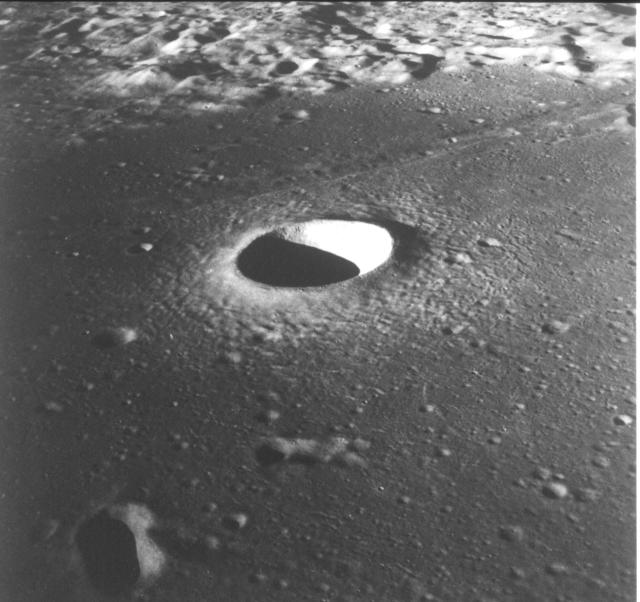
Figure 1: Crater Moltke - a simple crater
True complex craters contain terraces on the interior wall, a flat floor and a single peak or group of peaks in the centre of the crater floor. The interior wall terraces, which form due to landslides, result in a shallower overall inclination of the wall than in simple craters. The exterior walls are similar in appearance to simple craters. Figure 2 shows Crater Copernicus on the Moon, a typical lunar complex crater. Copernicus is 93 km in diameter, 3760 m deep with its’ rim raised 900 m above the surrounding plain. The group of central peaks rise up to 1200 m above the crater floor.
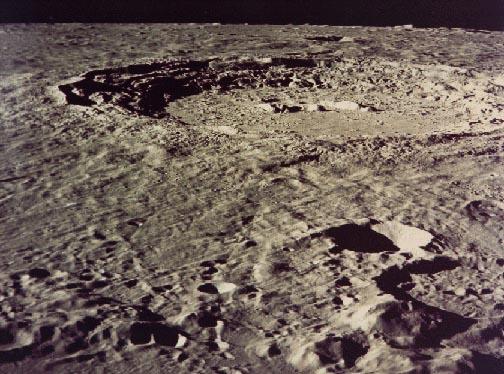
Figure 2: Crater Copernicus - a complex crater
At very large crater diameters, the central peak gives way to one or more concentric rings of peaks and the term impact basin is used. Impact basins are proportionally shallower relative to their diameter compared to simple and complex craters. Basins are further subdivided into central peak, peak ring and multi-ring basins. Mare Orientale (see Figure 3) on the Moon is considered to be the archetypal multi-ring impact basin. Orientale contains four concentric rings with the inner ring bordering the mare basalt fill. The outer ring, known as the Cordillera Mountains has a diameter of 920 km. The main two internal rings are formed by the Rook and Inner Rook Mountains. The mountains in the rings rise up to 2 - 5 km above the surrounding plain.
Figure 3: Mare Orientale - a multi-ring impact basin
Features which are common to all freshly formed craters, regardless of their morphology include the exterior wall, secondary craters and ejecta rays. Figure 4, which shows Crater Timocharis on the Moon, illustrates the typical characteristics of an exterior crater wall. The wall or mound is composed of target material ejected from the crater during impact. Close to the crater rim the ejecta forms a continuous blanket which is hummocky in profile. As the radial distance increases from the crater the ejecta blanket becomes discontinuous and exists as a series of low radial ridges. Numerous smaller craters surrounding the main crater are also evident in Figure 4. These smaller craters are called secondary craters and are produced when large fragments of ejecta from the main crater impact the surrounding area. Secondary craters are often noncircular due to the low velocities (typically 2 - 3 km/s) and low inclination trajectories during impact. Clusters or chains of secondary craters are frequently observed with “V” shaped ejecta ridges leading away from the craters due to the sequential landing of the fragments.
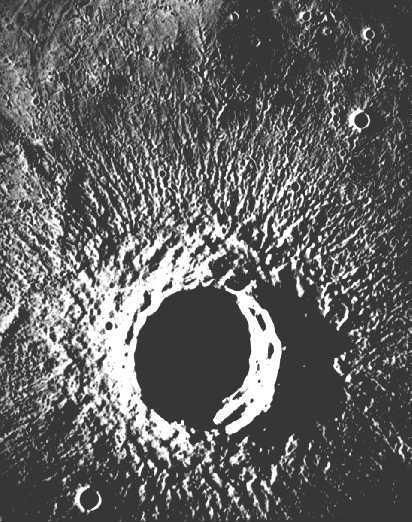
Figure 4: Crater Timocharis - ejecta blanket and secondary craters
The extreme form of discontinuous ejecta is crater ejecta rays which are low, relatively narrow ridges of ejecta that radiate away from the crater for considerable distances. Ejecta rays often have secondary craters associated with them. Prominent rays on the Moon are associated with Craters Tycho, Copernicus and Kepler. Tycho’s rays extend up to 1500 km from the crater. Whilst most craters are roughly circular (apart from secondary craters and craters produced by very low inclination trajectory impacts) crater rays are frequently noncircular. Figure 5 shows the rays produced by a small impactor. The symmetrical distribution of rays indicates the impactor struck the Moon on a near vertical trajectory. The nonsymmetrical distribution of Crater Proculus’ rays (see Figure 6) indicate a trajectory oblique to the Moon with the impactor travelling from the top left towards the bottom right of the image.
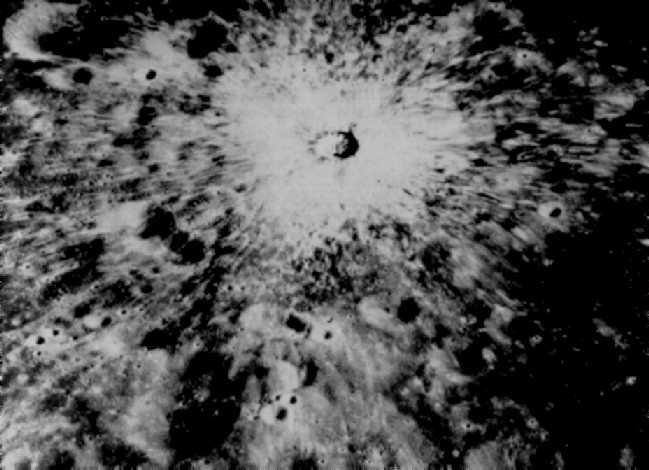
Figure 5: Crater rays produced by an impactor with a near vertical trajectory
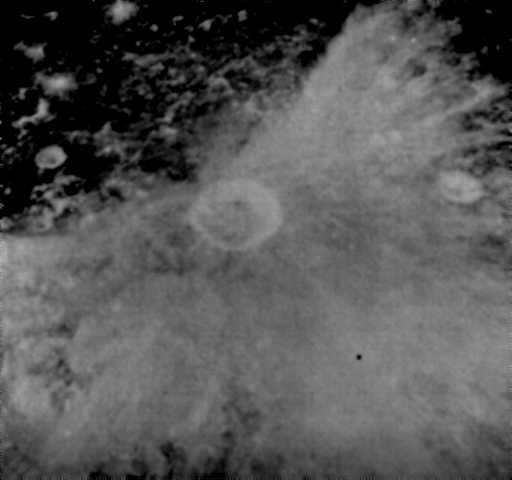
Figure 6: Crater rays produced by an impactor on an oblique trajectory
All photographs are courtesy of NASA.
Suggested further reading:
Heiken,G., Vaniman, D. and French, B.M. (1991) “Lunar Sourcebook - A User’s Guide to the Moon”, Cambridge University Press.
Taylor, S.R. (1982) “Planetary Science: A Lunar Perspective”, Lunar and Planetary Institute
Guest, J., Butterworth, P., Murray, J. and O’Donnell, W. (1979) “Planetary Geology”, David & Charles.